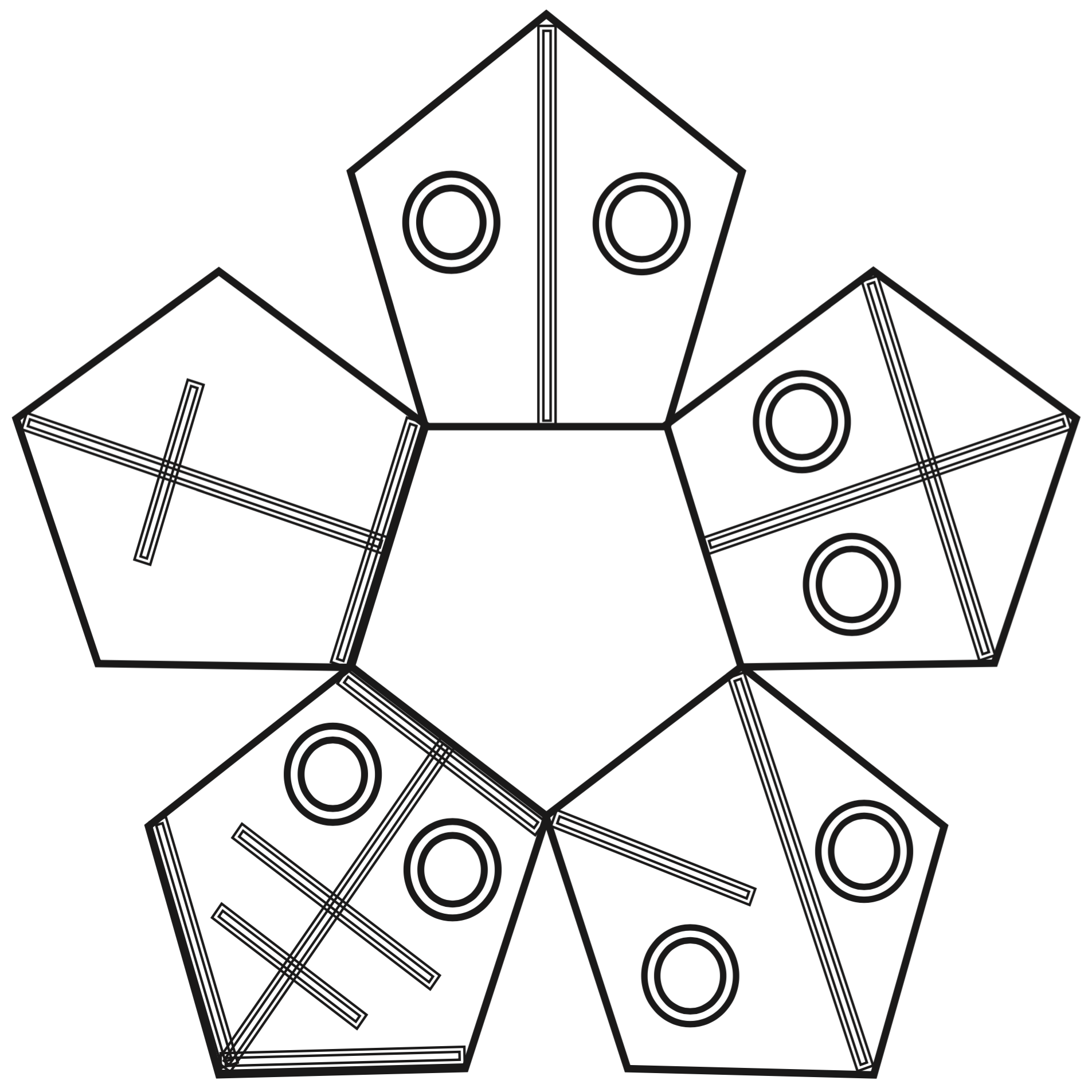Fluidity
In Japanese creation myth, there were gods in the heaven when there was nothing but a chaotic ocean on the earth. Two of the gods stirred the ocean with a halberd together, and when the water dripped from the halberd, it became an island, and this was the beginning of the nation that is now called Japan. Inspired by this story, the first piece tries to express, in a ritualistic manner, the chaotic ocean from where all things are created.
Graphic Score
The graphic score is based on five Japanese/Chinese characters which represent the five transforming elements of the world in Wu-Xing philosophy (Water:水, Wood: 木, Fire: 火, Metal: 金, Earth: 土). The performers perceive this score differently depending on their Chinese/Japanese character literacy. Some might be able to identify immediately what these images mean and where this idea is from while others might look at this just as a pure abstract design. The musicians create sounds and noises of the ocean based on these five elements. Their performance is regulated by their breathing cycles, like the shakuhachi’s honkyoku style, to represent the breath of the world being born.
The dancers, who wear costumes inspired by the Shinto shrine maiden, use movements based on dances for gods in Japan. One of them plays a kagura suzu (bells used for dances for gods), and the other two dancers hold LED lights that glow as if they were breathing, visualizing breathing. With these movements and instruments, they control the light and the musicians’ sounds/noises. The patterns on their costumes depict the koi and the dragon, and were designed specifically for this project.
The rule of the piece is that a musician starts playing when a dancer touches them and stops playing when the same or another dancer touches them again. When someone touches again, the musician starts playing again, and so on There are multiple dancers, so there is no full control on who plays when and how long in the piece. One of my attempts with this piece is to remove musical control from anyone and create more chance operation like but more organic moment with full respect to the performers.
The philosophy behind was to situate instruments, costumes, and performers beyond their conventional contexts and create a collaborative moment.
Music:
Contra Alto Clarinet: Vinny Golia
Didjeridu: Ulrich Krieger
Tonbak: Houman Pourmehdi
Sheng: Eugene Moon
Double Bass: Ben Finley
Percussion: Eric Heep
Dance:
Elizabeth Geocaris
MarieElena Martingano
Angelica Mondol Viana
Performed on April 6, 2016
Wild Beast at California Institute of the Arts
Costume Design:
Beryl Brachman
Xuan Hu
Marta Tiesenga
LED Lighting Design:
Eric Heep
Videography:
Yanyu Dong
Yun Chen
Composition/Direction/Editing
Kozue Matsumoto











